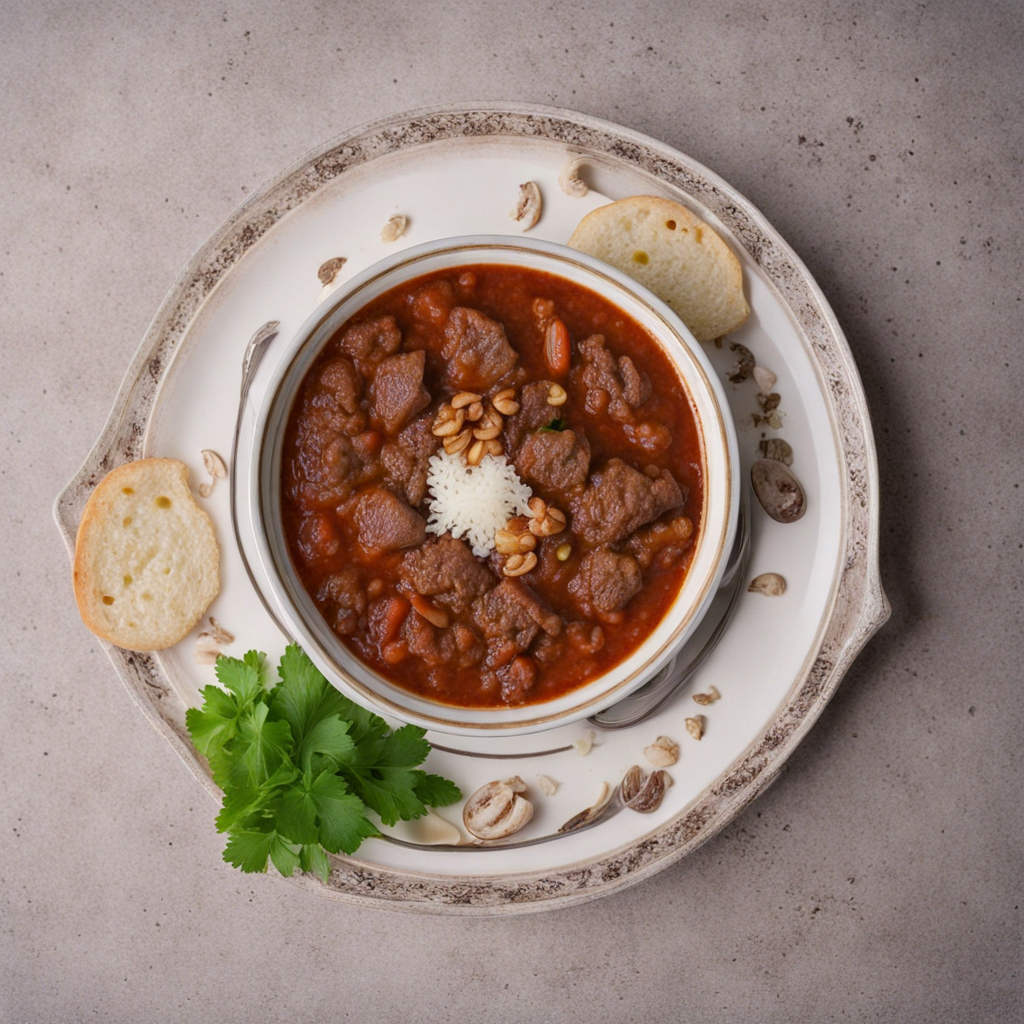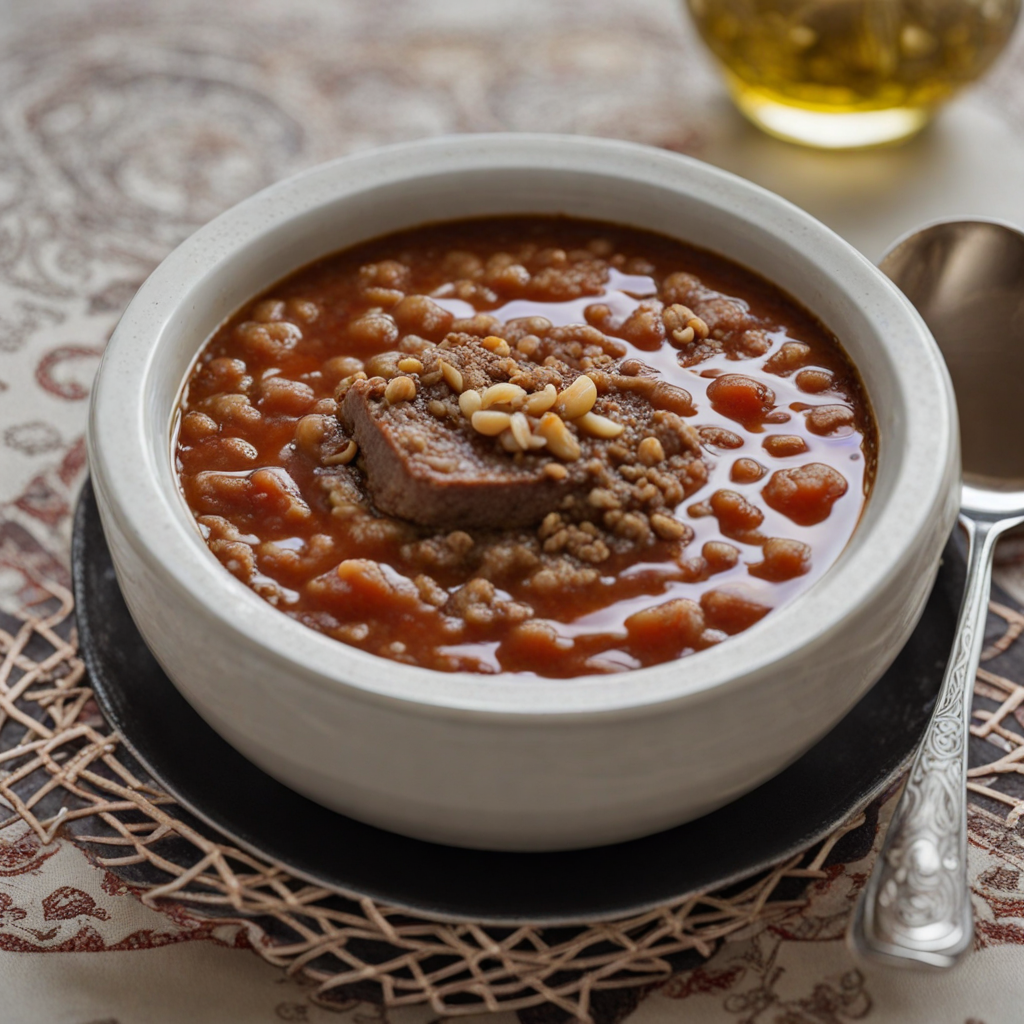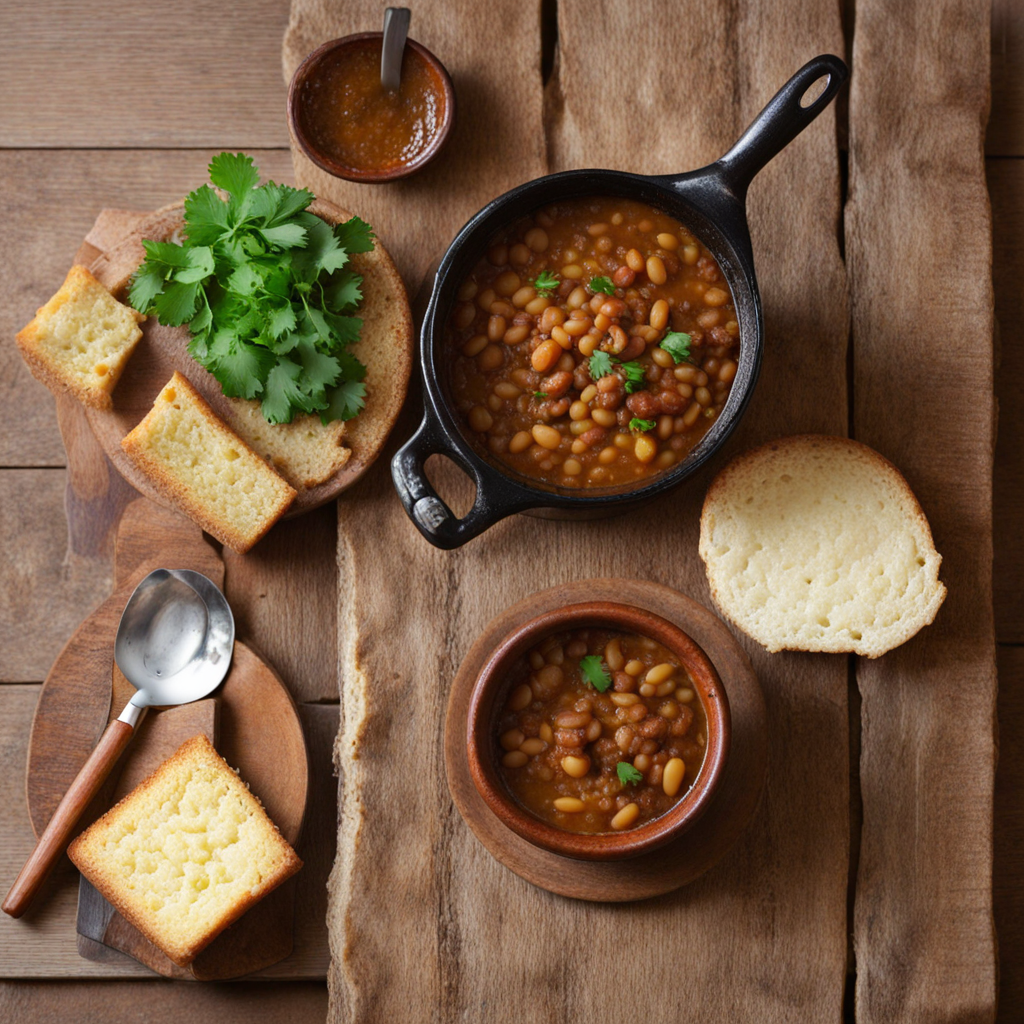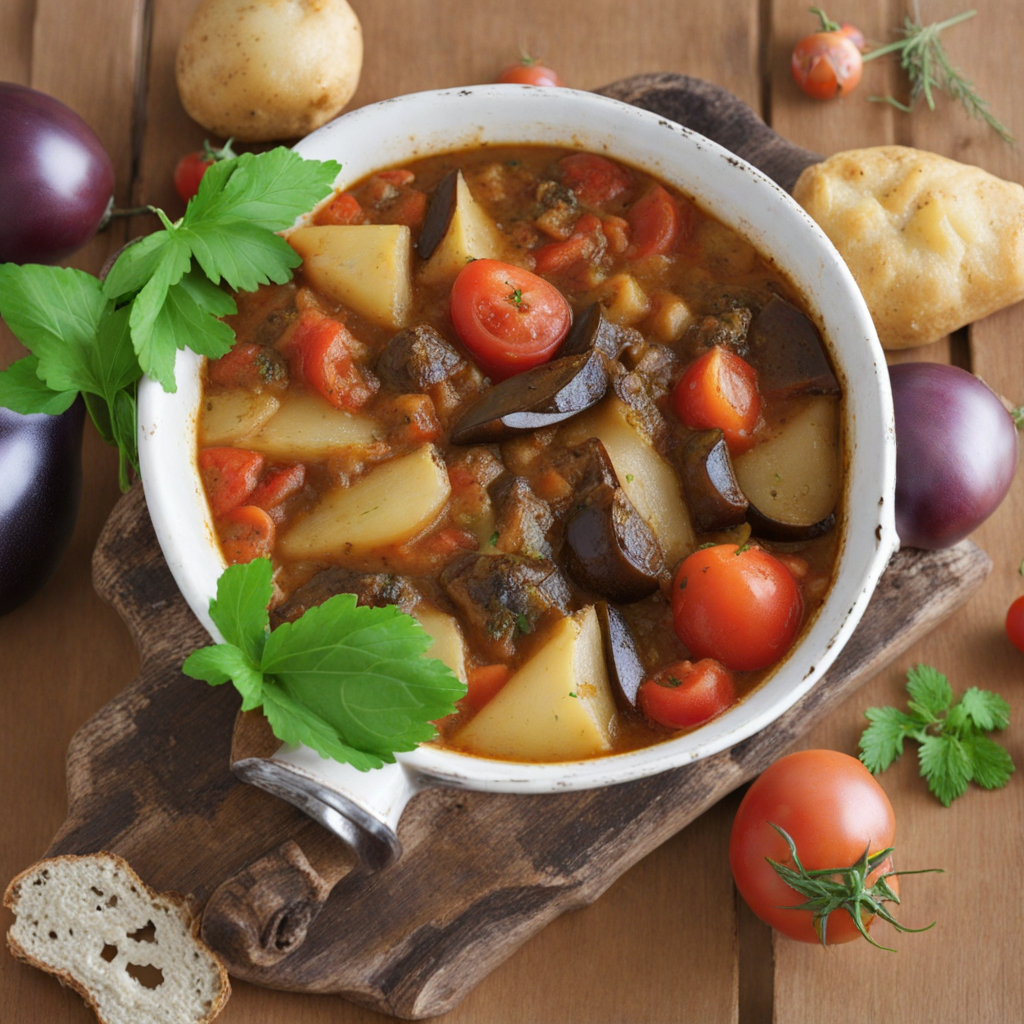Kharcho
Kharcho is a traditional Georgian soup that embodies the rich culinary heritage of Georgia, renowned for its bold flavors and hearty ingredients. Typically made with tender chunks of beef or lamb, the meat is simmered to perfection in a savory broth, infused with aromatic spices like coriander, fenugreek, and black pepper. The addition of rice or bulgur gives the dish a satisfying texture, while the inclusion of fresh herbs, such as parsley or cilantro, adds a vibrant freshness that brightens the overall flavor profile. One of the standout characteristics of Kharcho is its use of a unique ingredient called tkemali, a sour plum sauce that introduces a delightful tanginess to the soup. This distinctive element sets Kharcho apart from other soups and elevates it to a new level of complexity. The medley of spices and the tartness from the tkemali creates a harmonious balance that is both comforting and invigorating, making it a perfect dish for any occasion. Additionally, the depth of flavor is further enhanced by the slow cooking process, allowing the ingredients to meld together beautifully. Serving Kharcho is often accompanied by a sprinkle of fresh herbs and a dollop of sour cream, which adds a creamy richness to each bowl. This hearty soup is typically enjoyed as a main course, especially during colder months, providing warmth and satisfaction with every spoonful. Kharcho is not just a dish; it is a celebration of Georgian culture, inviting food lovers to experience the vibrant flavors and traditions of this enchanting country.
How It Became This Dish
The Rich History of Kharcho: Georgia’s Hearty Soup #### Origins Kharcho, a traditional Georgian soup, holds a cherished place in the country's culinary repertoire. Its roots can be traced back to the ancient culinary practices of the Georgian people, who have long celebrated the use of fresh, local ingredients and robust flavors. The term "kharcho" itself has its origins in the Georgian word "kharchi," which means "to boil," reflecting the soup's method of preparation. The earliest records of kharcho date back to the Middle Ages, around the 12th century, during Georgia's Golden Age when the Kingdom of Georgia was at its peak, both politically and culturally. This was a period marked by significant advancements in art, literature, and cuisine. The dish likely evolved from the need for a nourishing, hearty meal that could sustain people through the harsh winters and long work days in the fertile valleys and mountainous regions of Georgia. #### Cultural Significance Kharcho is more than just a meal; it is a symbol of Georgian hospitality and warmth. In Georgian culture, food serves as a central component of social gatherings, family celebrations, and religious rituals. Kharcho, with its rich flavors and comforting qualities, is often served during family feasts, holiday celebrations, and special occasions. It embodies the spirit of sharing and togetherness that is intrinsic to Georgian culture. The preparation of kharcho is often a communal activity, bringing together family members and friends who contribute to the cooking process. Traditionally, kharcho is made with beef or lamb, which is simmered with a blend of spices, herbs, and rice, creating a rich and hearty broth. The addition of ground walnuts and a special blend of spices, including coriander and bay leaves, gives kharcho its distinctive flavor. The soup is often finished with a splash of tklapi (a sour plum puree) or a squeeze of lemon, adding a layer of complexity that balances the richness of the meat. #### Ingredients and Variations The core ingredients of kharcho have remained relatively consistent throughout its history; however, regional variations and personal adaptations have emerged over time. The primary components include: 1. Meat: Traditionally, beef or lamb is used, but chicken or even vegetarian versions are now popular, catering to contemporary dietary preferences. 2. Rice: Short-grain rice is typically used, which absorbs the flavors of the broth and contributes to the soup's hearty consistency. 3. Spices and Herbs: The use of spices is crucial in defining the soup's flavor profile. The most common spices include coriander, black pepper, and saffron, while fresh herbs like parsley and cilantro are often added for garnish. 4. Walnuts: Ground walnuts are a unique ingredient in kharcho that give the soup a distinct nutty flavor and added texture. 5. Tomatoes: While some traditional recipes may not include tomatoes, modern interpretations often incorporate them for an added depth of flavor and color. 6. Tklapi: This sour plum purée is a traditional Georgian ingredient that lends a tangy note to the soup, enhancing its overall taste. #### Development Over Time As Georgia has evolved through centuries of cultural exchange, invasions, and trade, so has kharcho. The dish has absorbed influences from Persian, Turkish, and Russian cuisines, reflecting the diverse cultural landscape of the region. Each influence has contributed to the soup’s complex flavor profile while maintaining its identity as a quintessentially Georgian dish. During the Soviet era, kharcho became a staple in many Soviet restaurants, leading to its widespread popularity outside Georgia. This exposure allowed the dish to reach new audiences, but it also led to some alterations in recipes, with many chefs simplifying the preparation process or adjusting ingredients to suit local tastes. In recent years, there has been a renewed interest in traditional Georgian cuisine, spurred by a growing appreciation for its rich flavors and heritage. Chefs and home cooks alike are returning to authentic recipes, emphasizing the importance of using fresh, high-quality ingredients. This renaissance has helped kharcho regain its status not only as a comfort food but also as a culinary masterpiece that showcases the artistry of Georgian cooking. #### Contemporary Context Today, kharcho is celebrated not only within Georgia but also in the global culinary scene. Georgian restaurants around the world feature kharcho on their menus, often highlighting its unique combination of flavors and the cultural significance it carries. The dish has also found its way into food festivals and events, where it is showcased alongside other traditional Georgian dishes like khachapuri (cheese bread) and pkhali (vegetable spreads). The soup has also adapted to modern dietary trends, with vegetarian and vegan versions emerging to cater to a broader audience. This flexibility showcases kharcho's enduring appeal and its ability to evolve while retaining its traditional essence. #### Conclusion Kharcho is more than just a soup; it is a narrative of Georgia’s history, culture, and resilience. From its ancient origins to its contemporary interpretations, kharcho embodies the spirit of Georgian hospitality, warmth, and community. As it continues to be enjoyed by generations old and new, kharcho remains a testament to the rich culinary heritage of Georgia, offering a taste of its storied past while embracing the future. In every bowl of kharcho, one can find a connection to the land, the people, and the enduring traditions that have shaped Georgia’s identity for centuries.
You may like
Discover local flavors from Georgia







